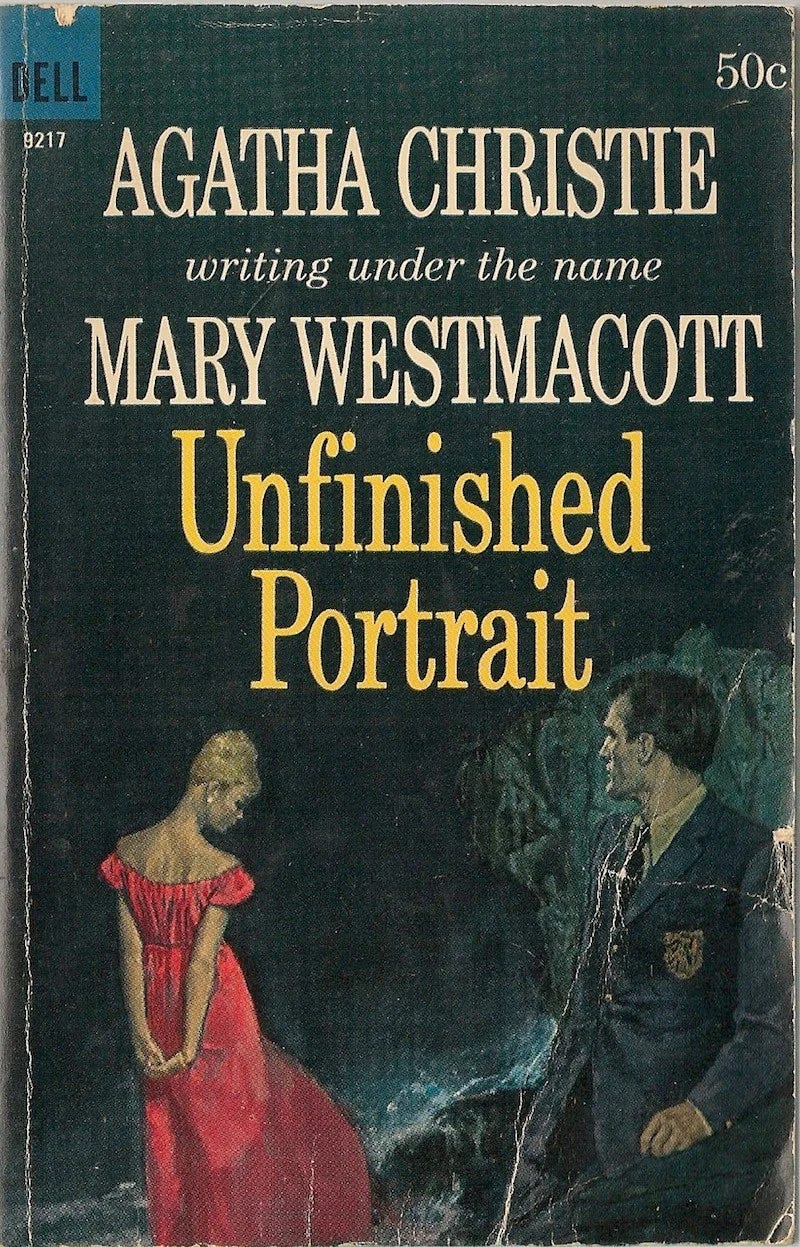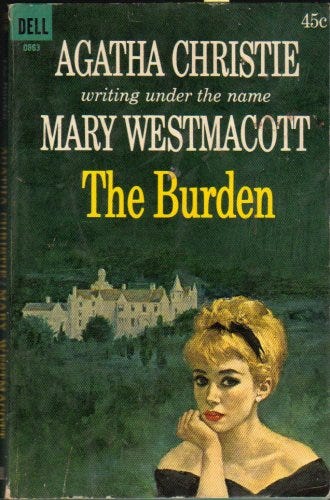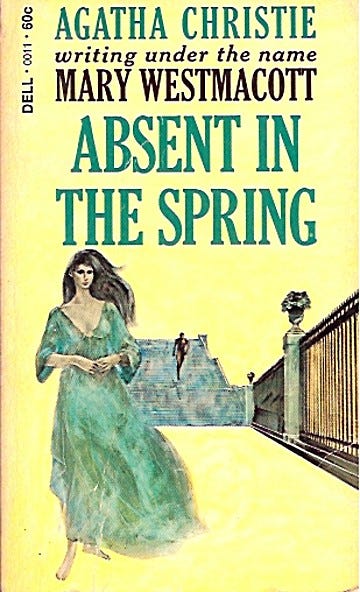When I first read Agatha Christie, in my teens, I would regularly note in the author description that she had written novels under the name Mary Westmacott. So I was always aware of her pseudonymous self, and for some reason not very interested in it. I found her chosen name slightly dull, which is odd because Agatha was very good on fictional names (‘I can’t start writing till I can get names that I feel fit,’ she wrote to her agent) and her own, real, married name - Victorian exotic plus a glint of the sinister (10 Rillington Place) is fortuitously brilliant.
More off-putting, however, was the description of the six Westmacott books as ‘romantic novels’, which sounded so frightful - love unleavened by life - that I simply didn’t want to know. How could Agatha, with her cool equations, her view of human nature (so realistic that the unworldly might call it cynical), have strayed into the pink paradise of Barbara Cartland? Worse yet, how could she have written anything that ‘inspired’ such cover art (see above, and indeed below)?
Well: she hadn’t.
It is quite true that the Westmacotts are about love, but that might be said of rather a lot of novels. And it is true, more pertinently, that Agatha had an aspect to her nature that might be called ‘romantic’. I was very struck by this when I wrote her biography. The powerfully imaginative child with invisible friends; the lovely girl with pale hair past her waist, whose dream was to sing Isolde on stage at Covent Garden; the young woman whose early short stories were in thrall to the supernatural, the unexplained; the wife and mother who wrote poems, sober and questing in tone, published in 1924 as ‘The Road of Dreams’…
That person existed, always, within the assured rationality of the detective fiction (where her appearance can occasionally be divined), and within the apparently assured matron - the ‘Queen of Crime’ - who created it. Between the years 1930 and 1956, she was called Mary Westmacott.
When I began writing my biography it was the six Westmacott novels, published within that time period, which excited me most about the woman who was my subject. They, it seemed to me, were the golden clues.
Keep reading with a 7-day free trial
Subscribe to Laura Thompson’s Substack to keep reading this post and get 7 days of free access to the full post archives.






